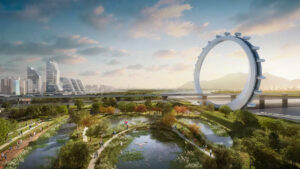
UNDP touts ‘sponge city’ model amid looming regional water scarcity
THE “sponge city” model has been put forward as a possible strategy to deal with water scarcity in Southeast Asia, according to the United Nations Development Programme (UNDP).
“It is important to develop local urban climate adaptation strategies while ensuring national and provincial plans include cities. While doing so, it is important to be able to identify vulnerabilities of urban systems,” it said in its ‘Building climate-resilient and inclusive cities’ policy brief.
“Early identification will help solve vulnerabilities enhancing synergies between solutions of these specific vulnerabilities and broader sustainable and low-carbon development plans,” it added.
The Philippines continued to be the most at-risk country in the world in 2023, according to the latest World Risk Index.
The UNDP said that cities are now facing severe stress on resources; natural disasters; socio-economic issues such as inequality and unemployment; and uncertainty from other emerging risks.
It said sponge cities “enable draining systems that can make better use of rainwater thanks to porous areas and storage.” This model can also help save water and reduce emissions.
“As countries, especially China and in Southeast Asia, are experiencing severe and increasingly pressing water scarcity, sponge cities can help in accumulating, storing, and reusing water,” the UNDP said.
“In this way, cities are able to address increasingly urgent demand for external water resources. This would improve the city’s water resilience, and also the water resource resilience of the entire region, a crucial and increasingly pressing issue,” it added. — Luisa Maria Jacinta C. Jocson



